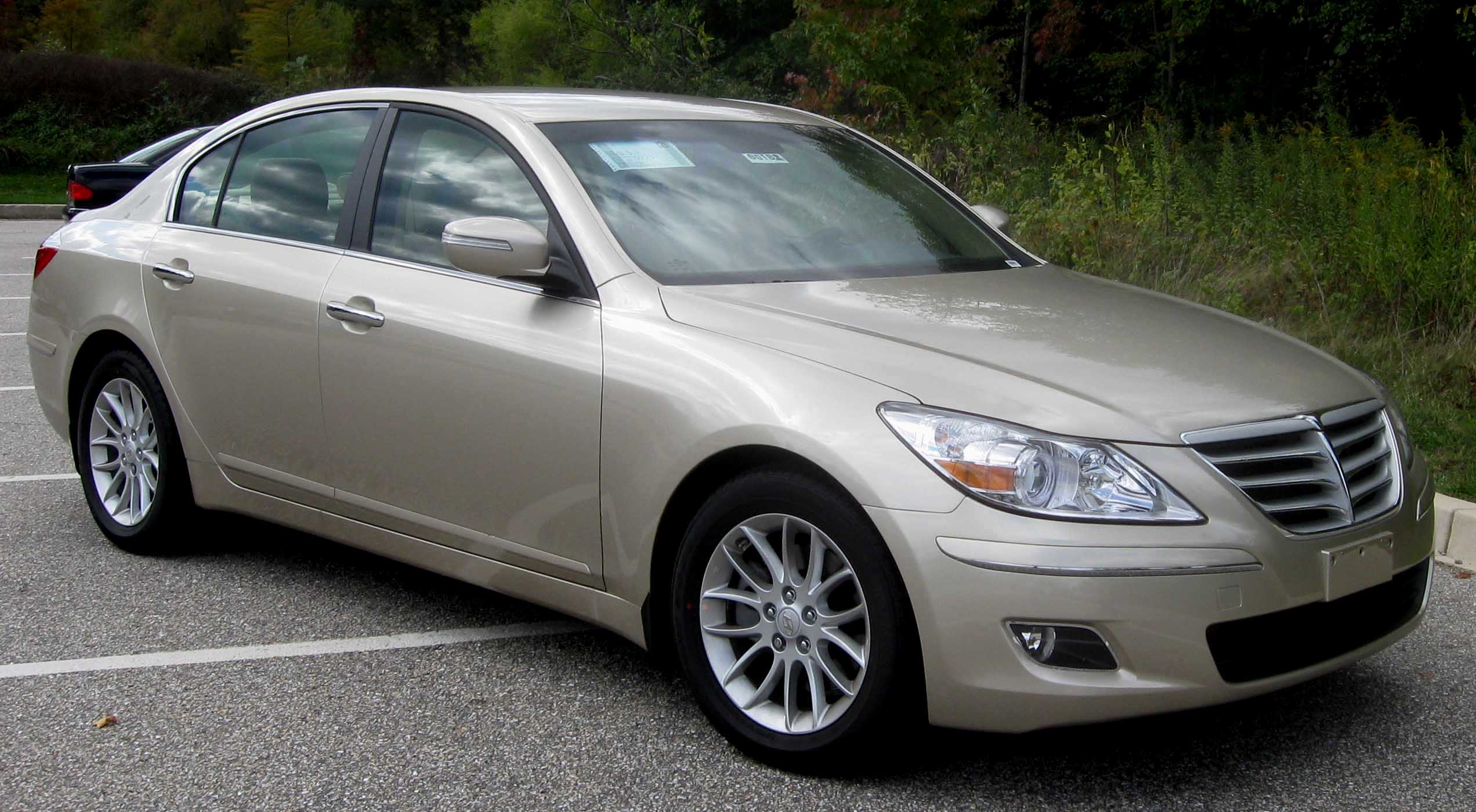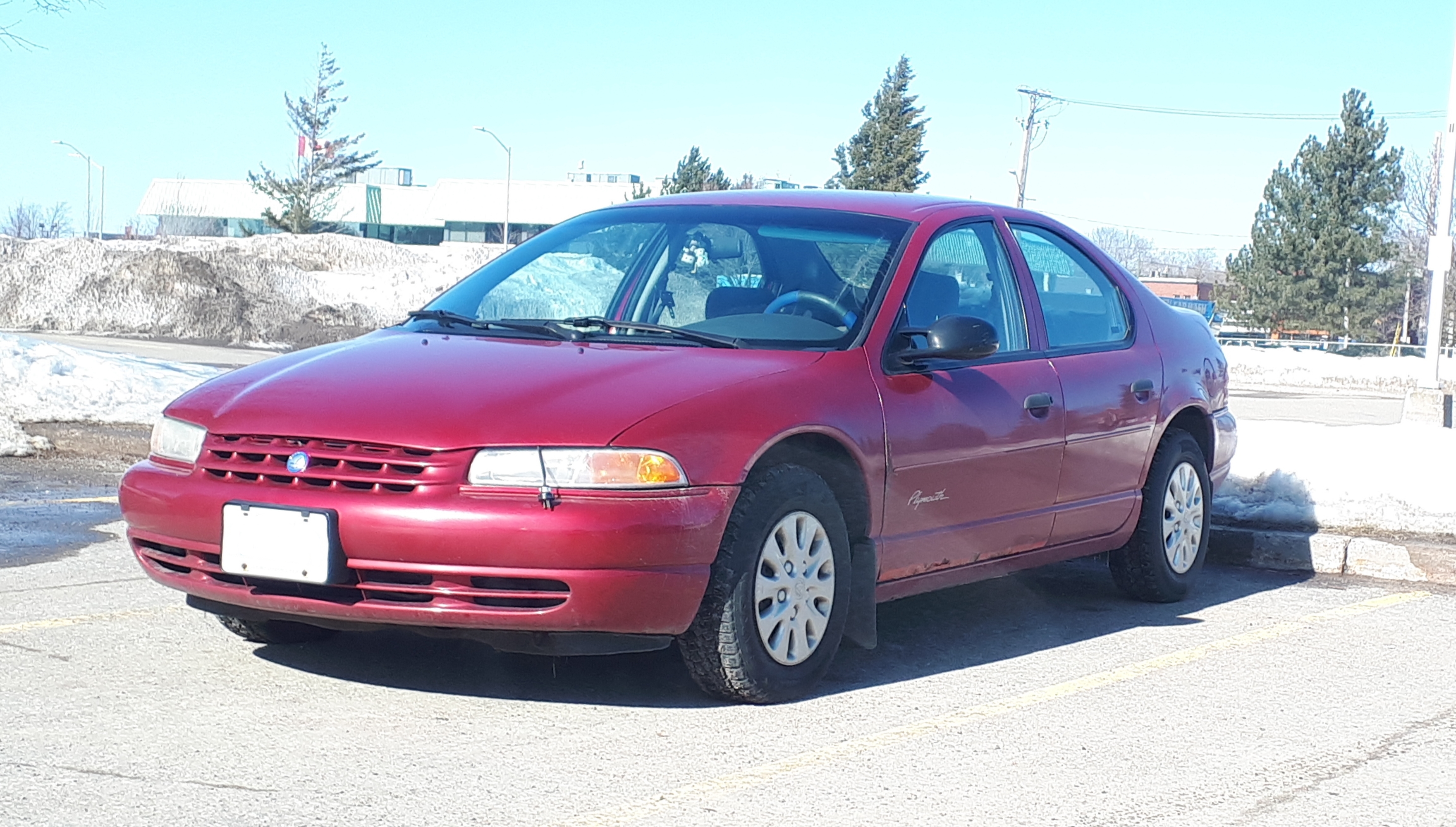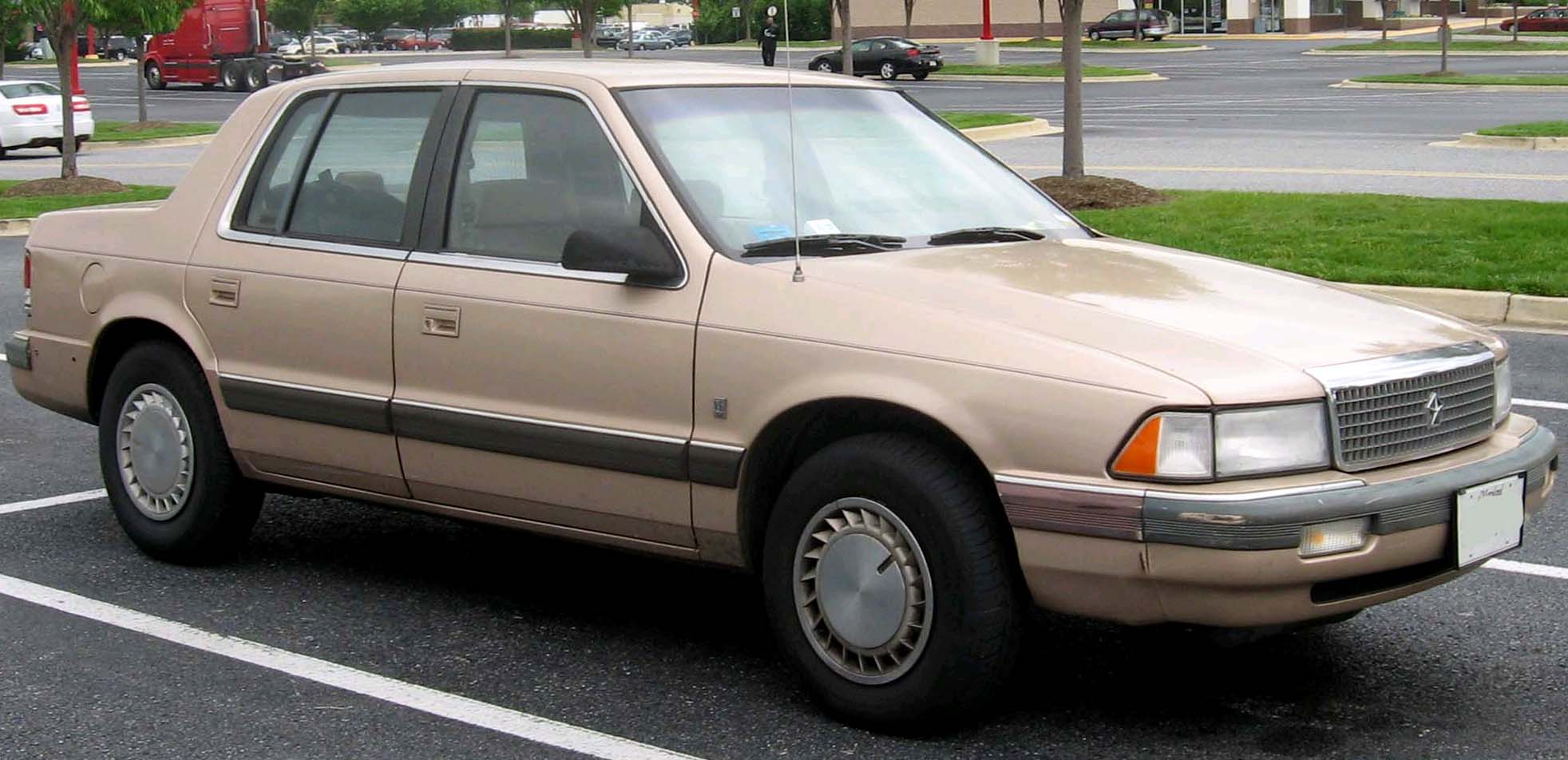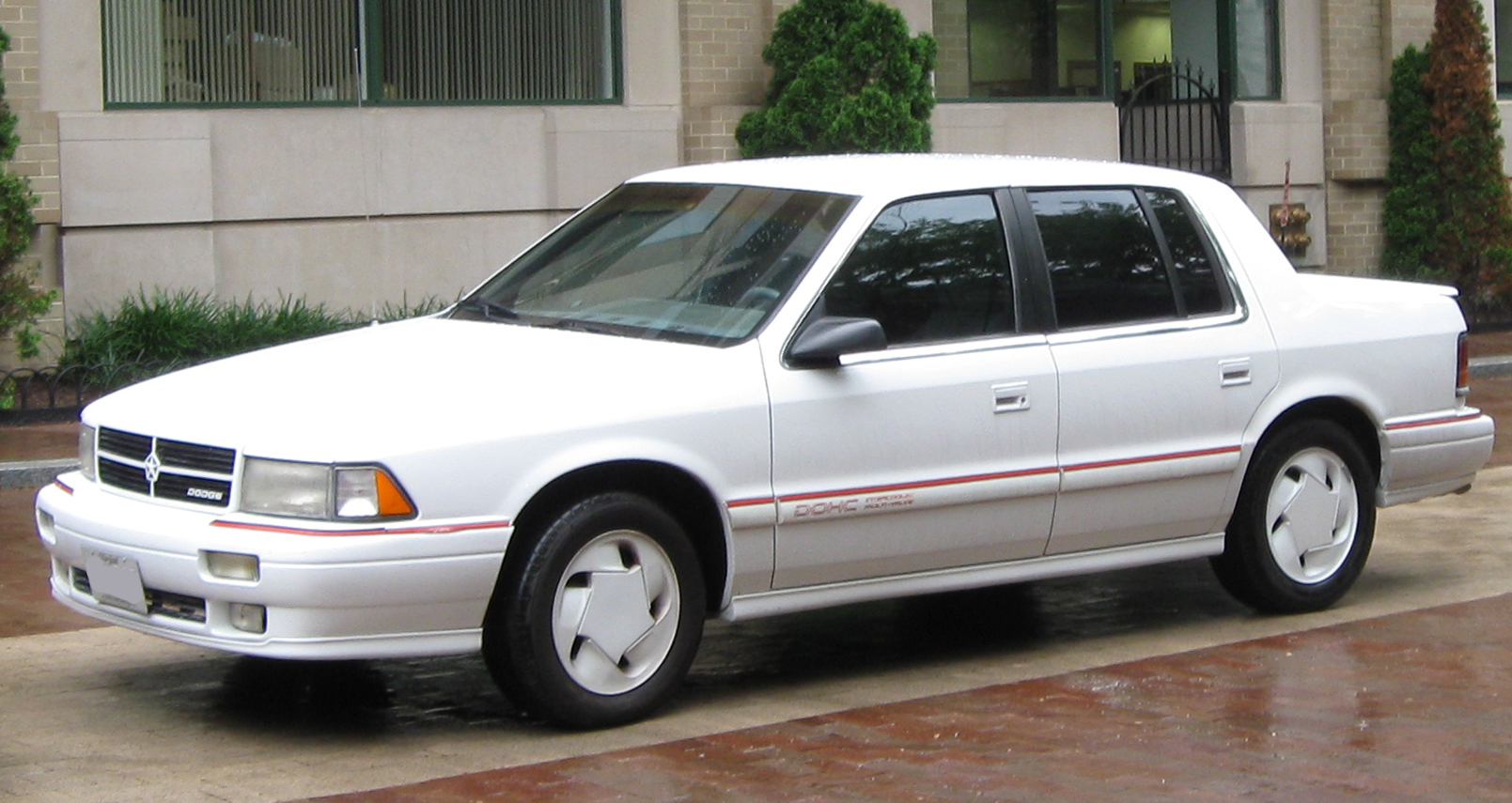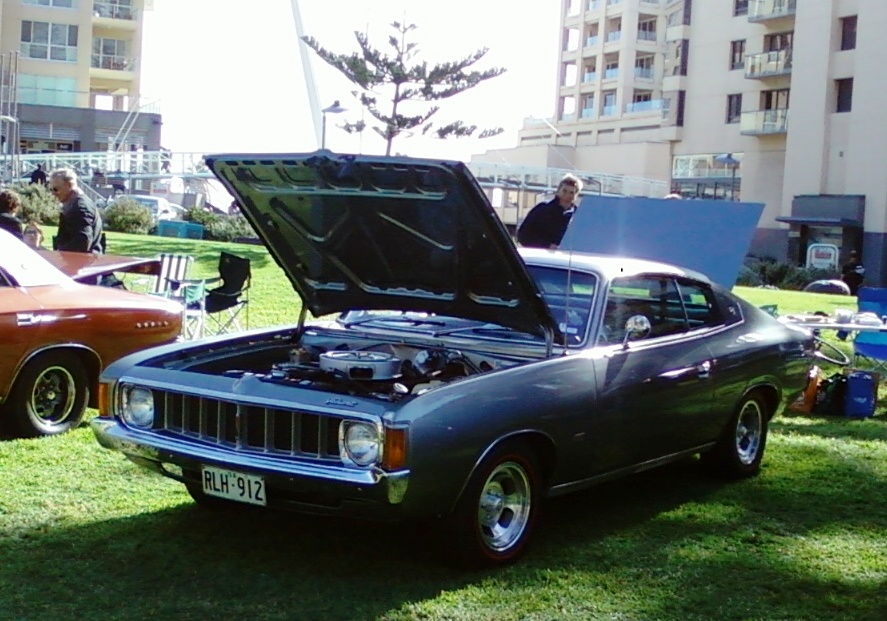|
Chrysler A Platform
The Chrysler A platform was the basis for smaller rear wheel drive cars in the 1960s. These cars are sometimes referred to as A-body cars. Cars using the A platform in various markets around the world include: * 1960–1976 Plymouth Valiant * 1960–1981 Chrysler Valiant * 1961–1962 Dodge Lancer * 1961–1963 DeSoto Rebel * 1963–1976 Dodge Dart * 1964–1969 Plymouth Barracuda * 1971–1976 Plymouth Scamp * 1970–1976 Plymouth Duster * 1971–1972 Dodge Demon * 1971–1978 Valiant Charger * 1969–1970 Valiant VF * 1970–1971 Valiant VG This list is not complete: A-platform vehicles not included on this list were sold in some countries until 1981. Wheelbases: * 106.5 in ** 1960–1962 Valiant, Chrysler Valiant, and Plymouth Valiant (worldwide) ** 1961–1962 Dodge Lancer ** 1961–1963 DeSoto Rebel (South Africa) * 106 in ** 1963–1966 Plymouth Valiant (USA, Mexico, Europe) ** 1964–1966 Plymouth Barracuda ** 1963–1966 Dodge Dart wagon ** 1965 V ... [...More Info...] [...Related Items...] OR: [Wikipedia] [Google] [Baidu] |
Rear Wheel Drive
Rear-wheel drive (RWD) is a form of engine and transmission layout used in motor vehicles, in which the engine drives the rear wheels only. Until the late 20th century, rear-wheel drive was the most common configuration for cars. Most rear-wheel drive vehicles feature a longitudinally-mounted engine at the front of the car. Layout The most common layout for a rear-wheel drive car is with the engine and transmission at the front of the car, mounted longitudinally. Other layouts of rear-wheel drive cars include front-mid engine, rear-mid engine, and rear-engine. Some manufacturers, such as Alfa Romeo, Lancia, Porsche (944, 924, 928) and Chevrolet (C5, C6, and C7 Corvettes), place the engine at the front of the car and the transmission at the rear of the car, in order to provide a more balanced weight distribution. This configuration is often referred to as a transaxle since the transmission and axle are one unit. History 1890s to 1960s Many of the cars built in the 19th cent ... [...More Info...] [...Related Items...] OR: [Wikipedia] [Google] [Baidu] |
Valiant VG
Valiant may refer to: Arts, entertainment and media Film * ''The Valiant'' (1929 film), starring Paul Muni * ''The Valiant'' (1962 film), directed by Roy Ward Baker * ''Valiant'' (film), a 2005 film about British homing pigeons Television * "Valiant" (''Merlin''), second episode of the British television series ''Merlin'' * "Valiant" (''Star Trek: Deep Space Nine''), an episode of the American television series ''Star Trek: Deep Space Nine'' and a starship in the episode * USS ''Valiant'', the initial but discarded name of USS ''Defiant'', in the ''Star Trek: Deep Space Nine'' series * USS ''Valiant'', a spaceship in the ''Star Trek'' second pilot episode "Where No Man Has Gone Before" Music * Vince Vance & the Valiants, an American country pop and rock and roll musical group * Valiant Records, a 1960s independent record label acquired in 1965 by Warner Bros. Literature * Valiant Comics, a comic book publisher * ''Valiant'' (comics), British comic published betw ... [...More Info...] [...Related Items...] OR: [Wikipedia] [Google] [Baidu] |
Chrysler Saratoga
The Chrysler Saratoga is an automobile built by Chrysler. The nameplate was used from 1939 to 1952 and from 1957 to 1960 in the U.S. market, in Canada through 1965, and in Europe from 1989 to 1995. In the beginning, it was introduced as a sport luxury model, using the Straight Eight engine from the Chrysler New Yorker which was more formal, and the Imperial which had graduated to special order limousine. The Saratoga was introduced one year after the luxurious New Yorker and was well equipped, wearing the Chrysler nameplate. It was initially more expensive than the New Yorker, then marketing changes repositioned the Saratoga more modestly as the Imperial took the top of the Chrysler hierarchy followed by the New Yorker. Items that were standard equipment such as power windows, power locks, power steering, power brakes, power adjustable front seat and air conditioning on the New Yorker were initially available on the Saratoga, then as years progressed became standard on the Saratog ... [...More Info...] [...Related Items...] OR: [Wikipedia] [Google] [Baidu] |
Front Wheel Drive
Front-wheel drive (FWD) is a form of internal combustion engine, engine and transmission (mechanics), transmission layout used in motor vehicles, in which the engine drives the front wheels only. Most modern front-wheel-drive vehicles feature a transverse engine, rather than the conventional longitudinal engine arrangement generally found in automobile layout#Rear wheel drive layouts, rear-wheel-drive and four-wheel drive, four-wheel-drive vehicles. Location of engine and transmission By far the most common layout for a front-wheel-drive car is with the engine and transmission at the front of the car, mounted transversely. Other layouts of front-wheel drive that have been occasionally produced are a front-engine mounted longitudinally, a mid-engine layout and a rear-engine layout. History Prior to 1900 Experiments with front-wheel-drive cars date to the early days of the automobile. The world's first self-propelled vehicle, Nicolas-Joseph Cugnot's 1769/1770 Nicola ... [...More Info...] [...Related Items...] OR: [Wikipedia] [Google] [Baidu] |
Chrysler JA Platform
The JA platform was Chrysler's smaller complement to the LH cars which were larger than the Ks, and a direct size replacement for the last extended K cars, the Acclaim and Spirit. It was a mid-size front-wheel drive automobile platform that was the basis for the ''Cloud Cars'' – the Chrysler Cirrus/Dodge Stratus/Plymouth Breeze starting in 1994. Like the LH, it was a cab forward design. While this platform was numerically successful, the highest volume for family cars competing against cars like the Taurus, Accord, or Camry would move to the LH platform cars, which were often classified as full-size. 1995 The first JA cars were the 1995 Chrysler Cirrus and Dodge Stratus. These were available with either a 2.0 L 16-valve SOHC, 2.4 L 16-valve DOHC, or a Mitsubishi-designed 2.5 L 24-valve SOHC V6 engine. The Plymouth Breeze was introduced in late 1995 with most of the same options available to the other two models (minus the V6 engine). The JA Platform was p ... [...More Info...] [...Related Items...] OR: [Wikipedia] [Google] [Baidu] |
Plymouth Acclaim
The Plymouth Acclaim is a mid-size sedan produced in the 1989 to 1995 model years. The Acclaim was Plymouth's updated replacement for both the similarly sized E-body Caravelle and the K-body Reliant. Badge engineering was employed to give Dodge and Chrysler their own versions of the AA-body Acclaim: the Dodge Spirit, the Chrysler LeBaron sedan, and the export-market Chrysler Saratoga. It was replaced by the Plymouth Breeze in 1996. Platform The Acclaim was a version of the Chrysler Corporation's AA-body 4-door sedan, which was an evolutionary development of Chrysler's extended K-car platform. Acclaim (and Dodge Spirit) production ended on December 9, 1994, after a short 1995 model year and the Cab-forward Plymouth Breeze was introduced as a replacement for 1996. The Acclaim was one of the last K-car derivatives produced by Chrysler. In all, just under half a million examples of the Acclaim were built in its 7-model year run. Market positioning The AA-body cars were bad ... [...More Info...] [...Related Items...] OR: [Wikipedia] [Google] [Baidu] |
Dodge Spirit
The Dodge Spirit is a midsize automobile marketed by Dodge from the 1989 to the 1995 model years. Succeeding the Dodge Aries, Dodge Lancer, and Dodge 600 , the Spirit was marketed between the Shadow and the Dynasty within the Dodge product line, exclusively as a four-door notchback sedan over a single generation. The Spirit used the Chrysler AA platform, an extended-wheelbase derivative of the Chrysler K platform and rebadged variants were marketed by all three Chrysler divisions, including as the Plymouth Acclaim, 1990-1994 Chrysler LeBaron sedan — and in Europe as the Chrysler Saratoga. Chrysler assembled the Spirit and its rebadged variants at Newark Assembly (Newark, Delaware) and Toluca Car Assembly (Toluca, Mexico) with production ending on December 9, 1994, replaced for model year 1995 by the Dodge Stratus. Design overview The Spirit could seat six passengers with an optional front split-bench seat. Featuring a solid-beam rear axle and a MacPherson st ... [...More Info...] [...Related Items...] OR: [Wikipedia] [Google] [Baidu] |
Chrysler LeBaron
The Chrysler LeBaron is a line of automobiles built by Chrysler from 1931 to 1941 and from 1977 to 1995. Chrysler also used the LeBaron name for the Imperial LeBaron from 1957 to 1975. The model was introduced in 1931, with a body manufactured by LeBaron, and competed with other luxury cars of the era, such as Lincoln and Packard. After purchasing LeBaron with its parent Briggs Manufacturing Company, Chrysler introduced the luxury make Imperial in 1955, and sold automobiles under the name Imperial LeBaron from 1957 until 1975. Chrysler discontinued the Imperial brand for 1976 and reintroduced the Chrysler LeBaron in 1977 to what was then Chrysler's lowest-priced model. Chrysler has used the ''LeBaron'' name across five cars: * 1977–1981 M-body (mid-size) LeBaron sedan, coupe, and wagon * 1982–1988 K-body (mid-size) LeBaron sedan, coupe, convertible, and wagon * 1985–1989 H-body (mid-size) LeBaron GTS hatchback * 1987–1995 J-body ( personal luxury) LeBaron coupe and ... [...More Info...] [...Related Items...] OR: [Wikipedia] [Google] [Baidu] |
Valiant VF
The Chrysler Valiant (VF) is an automobile that was produced in Australia by Chrysler Australia from 1969 to 1970. It was released in March 1969, replacing the Chrysler VE Valiant. Changes The VF Valiant was a facelifted version of the VE Valiant, featuring four new quarter panels, new lights and a new grille.Gavin Farmer, Great Ideas in Motion, 2010, pages 139 to 142 The four-door sedan model marked a major departure from the U.S Plymouth Valiant models that previous Australian models were based on with Australian engineering now taking precedence. Parking and Turn signal lights in the VF range were now mounted above the headlights and the front came with a unique convex one-piece grille. Seating, safety features and soundproofing were improved,Tony Davis, Aussie Cars, 1987, page 106 Pacer and Regal 770 models were new and a hardtop body style was offered for the first time. The hardtop combined the VF Valiant front, from the A-pillar forward, with the rear of the U.S fourth ... [...More Info...] [...Related Items...] OR: [Wikipedia] [Google] [Baidu] |
Plymouth Valiant
The Plymouth Valiant (first appearing in 1959 as simply the Valiant) is an automobile which was marketed by the Plymouth division of the Chrysler Corporation in the United States from the model years of 1960 through 1976. It was created to give the company an entry in the compact car market emerging in the late 1950s and became well known for its excellent durability and reliability. It was one of Chrysler's best-selling automobiles during the 1960s and 1970s helping to keep the company solvent during an economic downturn. ''Road & Track'' magazine considered the Valiant to be "one of the best all-around domestic cars". The Valiant was also built and marketed, with or without the Plymouth brand, worldwide in countries including Argentina, Australia, Brazil, Canada, Finland, Mexico, New Zealand, South Africa, Sweden, and Switzerland, as well as other countries in South America and Western Europe. Its compact size, by American standards, allowed it to be sold as a large car in Eu ... [...More Info...] [...Related Items...] OR: [Wikipedia] [Google] [Baidu] |
Valiant Charger
The Chrysler Valiant Charger was a two-door hardtop coupe introduced by Chrysler Australia in 1971. It was a short wheelbase version of the concurrent Australian Chrysler Valiant sedan. Introduced within the VH Valiant series, it continued as a variant through the subsequent VJ, VK and CL series, until production ceased in 1978. It was marketed and badged as the Valiant Charger in the VH and VJ series and as the Chrysler Charger in the later VK and CL series. While still based on the US Chrysler A-body platform, with virtually identical front suspension, the fenders were widened, and a wider rear axle fitted, so that the track, front and rear, was considerably wider than any US A-body, this also allowed wheels much wider than a US A-body. The Australian Chargers also used a 5-on-4.5" wheel bolt circle (still 7/16" studs), while the US cars did not go to "big bolt pattern" until 1973. The Charger was extraordinarily popular in Australia during the VH series. At one point Charger p ... [...More Info...] [...Related Items...] OR: [Wikipedia] [Google] [Baidu] |
Plymouth Duster
The original Plymouth Duster is a semi-fastback two-door coupe version of the compact-sized Plymouth Valiant automobile that was marketed by Plymouth in the U.S. from 1970 until 1976 model years. History The Duster coupe provided the compact-sized Plymouth Valiant with a sporty body style to attract customers. The car was a $15 million effort to update the Valiant for the 1970 model year. The Valiant badge appeared only on the first model year Dusters, and continued to be used on all the companion four-door sedan and two-door Valiant Scamp hardtop models. The Duster was built on the Valiant platform and shared the same front-end sheet metal, but featured a different design from the cowl back. The Duster was also positioned to compete with Ford's slightly smaller semi-fastback Maverick compact car and the AMC Hornet, which were both introduced in 1970. It also competed with the somewhat larger semi-fastback Chevrolet Nova, whose design was introduced in 1968. While the Mav ... [...More Info...] [...Related Items...] OR: [Wikipedia] [Google] [Baidu] |
